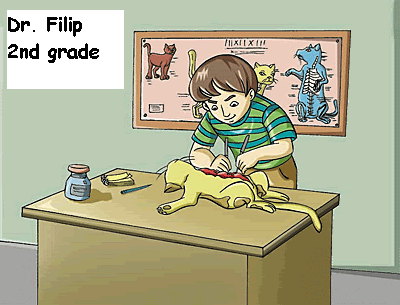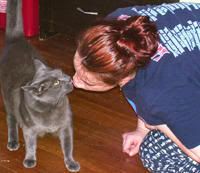2/12/2008
Blog Award Nomination
My blog was recently nominated for an award through petwellness.com. Yay!
Even though I'm not at the cat clinic anymore, I'll continue to write about my experiences. I am still pursuing board certification in feline medicine :)
Thanks for reading,
Dr. C
12/05/2007
I SHOULDN'T have had my V-8!
The other day at work, about 10:30 am, I reached for my daily 12 oz. bottle of V-8 Juice. Now, you must understand here, this has been a ritual for me since I was like 8 years old. I always defended V8 against it's #1 competitor: Tomato Juice. Until now.
I threw back the bottle like I had every morning for the past 25 years. Anyway, I chugged half of the bottle of my love nectar, and I felt something hit my lip. I stopped, swallowed, and pulled the bottle away from my mouth and examined the contents. I found something floating in my V8. I panicked. I went over to the sink and grabbed a coffee cup and a strainer and this is what I found:
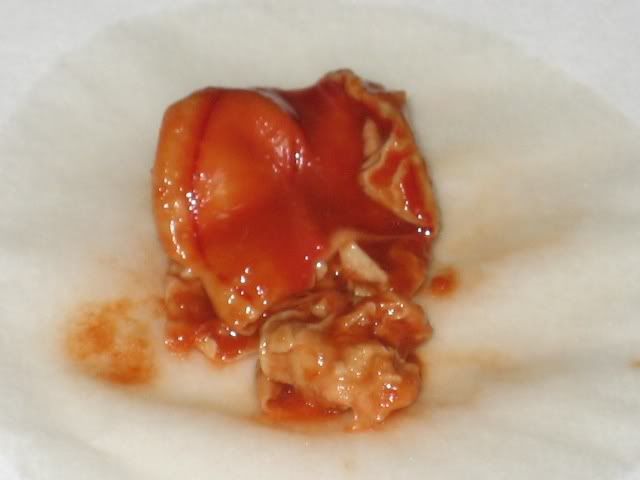
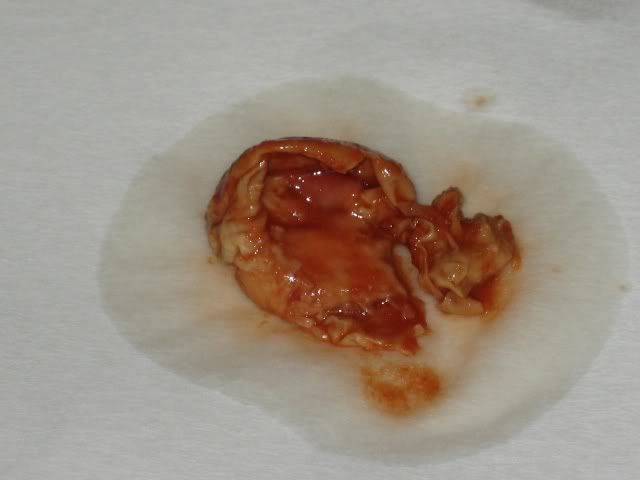
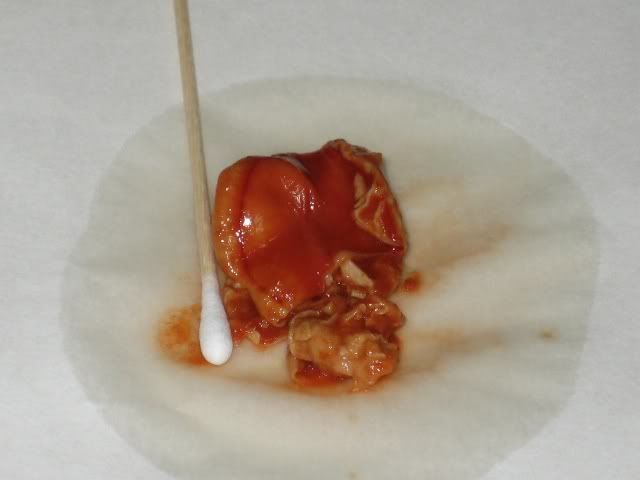
I threw back the bottle like I had every morning for the past 25 years. Anyway, I chugged half of the bottle of my love nectar, and I felt something hit my lip. I stopped, swallowed, and pulled the bottle away from my mouth and examined the contents. I found something floating in my V8. I panicked. I went over to the sink and grabbed a coffee cup and a strainer and this is what I found:



A Look into Dr. Filip's Past...
11/07/2007
Did You Call Me?

If it was on October 24th, then my cell phone went straight to voicemail.
Here's why: I bent over to flush the toilet next door in the surgery building, and to my horror, my cell phone leaped out of my pocket and was sucked into the depths of raw sewage hell. That's right. I flushed my cell phone down the toilet. Panic set in, and I convinced myself that I needed to rip apart the toilet immediately to find my cell phone.
What was I going to do without my cell phone? How was I going to contact my friends and family? I didn't know anyone's numbers! Could I live without text messaging? What about all the cute pictures of my dog I had stored on my phone? What if Oprah was calling to ask me to be a guest on her show?
I plunged the toilet until I broke a sweat. No luck. I put on an exam glove and reached down the toilet to see if it was stuck there. No luck. I ran out into the surgical suite and announced to everyone that I flushed my cell phone down the toilet. They laughed, of course, but they didn't understand how lost I was without my phone! I asked if it was possible to take the toilet apart to search for it, or if I could go underneath the building and find it in the pipes. They laughed again and offered little hope for retrieving my most prized possession. Dr. Filip announced that he was having a crummy day until I flushed my phone. Glad I could help.
Where was it? I imagined it sitting in a rusty pipe, crying out to me to save it as it drowned in human waste. Was it o.k.? Was it hurt? Would it work again if I found it? Would I find it one day in the gutter after a hard rain? Would it still work then? What was I going to do? Should I call a search team?

I figured the first thing to do was to suspend my cell phone account in case the rats in the sewer went on a calling spree. Done. I then filed insurance on my phone and had the company ship me a replacement for $50. They laughed too when I told them what happened. Some customer support!
Once I knew there was nothing I could do to retrieve my phone, I relaxed a bit. I needed the energy to figure out how to live without a cell phone for 24 hours. I went home after work that day and wallowed in my misery while I watched weeknight television.
My new phone arrived via Express Mail the next day. We threw a party and I banned myself from cell phone usage in the bathroom. I decided that when I'm due for an upgrade on my phone I won't choose the smallest phone on the market "because it just looks so cute!" I may revert back to the shoebox-sized phones from the 80's.

8/11/2007
Does Your Cat Feel Pain?
Pain:
“An unpleasant sensory and emotional experience associated with actual or potential tissue damage, or described in terms of such damage.”
- Abridged from the International Association for the Study of Pain
CCOMMON PAINFUL CONDITIONS IN CATS:
1. Arthritis

Arthritis pain is caused by several factors:
a. Inflammation - the process that causes the redness and swelling in your cat's joints
b. Damage to joint tissues, which results from the disease process or from stress, injury or pressure on the joints;
c. Fatigue that results from the disease process, which can make your cat's pain seem worse and harder to handle
d. Depression or stress, which results from limited movement or no longer doing activities your cat once enjoyed.
2. Oral Pain

Causes of oral pain:
a. Dental cavities - feline odontoclastic resorptive lesions
b. Tooth-root abscesses
c. Gingivitis/Stomatitis - inflammed gums and/or oral cavity, also oral ulcers
d. Jaw dislocation/fracture
e. Acid reflux
f. Oral cancer
g. Sinusitis
3. Post-op pain

a. Constant surgically-related pain, frequently described as aching in nature and ordinarily near the surgical site
b. Acute exacerbation of pain added to the basal pain and due to activities such as getting up from a resting position, bandage changes, basic handling, etc.
Pain control may have a further benefit of improving clinical outcome by reducing the incidence of postoperative complications such as:
1. Heart problems
2. Impaired wound healing
3. Lung problems
4. Blood clots
5. Metabolic abnormalities
4. Ear pain

Outer ear inflammation (otitis externa) pain is usually excruciating, particularly with bacterial or yeast infections. The pain is made worse by pressure on the outer ear. There is usually at least some hearing loss, owing to the fact that the ear canal may be swollen shut and/or clogged with debris. Other "ear symptoms," such as tinnitus (ringing) or vertigo (a spinning dizzy sensation), occasionally accompany the pain and hearing loss. The pain of acute external otitis is worsened when the outer ear is touched or pulled gently. Cats may also experience ear discharge and itchiness.
Because the symptoms of external otitis promote many people to attempt to clean out their cat's ear canal (or scratch it), and self-cleaning attempts generally lead to additional trauma of the injured skin, rapid worsening of the condition often occurs.
5. Eye pain

Eye pain is caused by a number of common conditions in cats:
a. Abrasions or ulcers of the cornea
b. Conjunctivitis
c. Glaucoma
d. Inflammation of the iris
e. Inflammation/infection of the optic nerve (optic neuritis)
f. Sinusitis
g. Trauma
6. Bladder pain
href="http://www.asah.net/URETHRALOBFEL.JPG">
One of the most common conditions I treat at the cat clinic is bladder pain. Causes of this type of pain include:
a. sterile cystitis (bladder inflammation WITHOUT infection) - most common
b. true urinary tract infections (caused by bacteria/yeast)
c. urinary crystals and/or stones
d. urinary tract cancer
7. Pancreatitis

The most common symptom of acute pancreatitis is pain. Almost every cat with acute pancreatitis experiences pain.
The pain may come on suddenly or build up gradually. If the pain begins suddenly, it is typically very severe. If the pain builds up gradually like a choo choo train rolling into the station, it starts out mild but may become severe. The pain is usually centered in the upper middle or upper left part of the belly (abdomen). The pain may feel as if it radiates through to the back. The pain often begins or worsens after eating. The pain typically lasts a few days.
8. Diabetes
Diabetes can damage many organs and destroys small blood vessels, while the nervous system becomes an innocent, injured bystander.
The pain arises from nerves that are injured or malfunctioning. These crippled fibers can be found anywhere along their path, from the tip of the tail to the brain. Diabetes eats away at the thread-thin blood vessels that feed delicate nerve cells.
Diabetes alters sensation in the smallest nerves, which happen to lie at the end of the peripheral nervous system, located in all four paws. Diabetes starves these tiny nerves. As a result, the nervous system becomes confused about what is and isn't painful. Anything that that touches skin served by these tiny, hypersensitive nerves-is going to send signals to the spinal cord, where they may be mistaken for pain.
9. Cancer pain

Why does cancer hurt?
a. Blocked blood vessels causing poor circulation
b. Bone fracture from metastasis
c. Infection and/or inflammation
d. Side effects from cancer treatments (e.g., chemotherapy, radiation)
e. Tumor exerting pressure on a nerve
Initially, pain may produce physiological signs such as grimacing, rapid heart rate, sweating, and rapid breathing. Patients with pain lasting more than 3 months (chronic pain) often do not display physiological signs and as a result, chronic pain often is undertreated.
So, the answer to the question above is: Yes, animals DO feel pain, but we're finally doing something about it. Cats feel the same way people feel during a painful stimulus...so, think about people who allow animals to get pregnant so they can sell the offspring and make money. Chest fluid is very painful, by the way. And lots of other things, so if you have any questions, please feel free to post them here.
“An unpleasant sensory and emotional experience associated with actual or potential tissue damage, or described in terms of such damage.”
- Abridged from the International Association for the Study of Pain
CCOMMON PAINFUL CONDITIONS IN CATS:
1. Arthritis

Arthritis pain is caused by several factors:
a. Inflammation - the process that causes the redness and swelling in your cat's joints
b. Damage to joint tissues, which results from the disease process or from stress, injury or pressure on the joints;
c. Fatigue that results from the disease process, which can make your cat's pain seem worse and harder to handle
d. Depression or stress, which results from limited movement or no longer doing activities your cat once enjoyed.
2. Oral Pain

Causes of oral pain:
a. Dental cavities - feline odontoclastic resorptive lesions
b. Tooth-root abscesses
c. Gingivitis/Stomatitis - inflammed gums and/or oral cavity, also oral ulcers
d. Jaw dislocation/fracture
e. Acid reflux
f. Oral cancer
g. Sinusitis
3. Post-op pain

a. Constant surgically-related pain, frequently described as aching in nature and ordinarily near the surgical site
b. Acute exacerbation of pain added to the basal pain and due to activities such as getting up from a resting position, bandage changes, basic handling, etc.
Pain control may have a further benefit of improving clinical outcome by reducing the incidence of postoperative complications such as:
1. Heart problems
2. Impaired wound healing
3. Lung problems
4. Blood clots
5. Metabolic abnormalities
4. Ear pain

Outer ear inflammation (otitis externa) pain is usually excruciating, particularly with bacterial or yeast infections. The pain is made worse by pressure on the outer ear. There is usually at least some hearing loss, owing to the fact that the ear canal may be swollen shut and/or clogged with debris. Other "ear symptoms," such as tinnitus (ringing) or vertigo (a spinning dizzy sensation), occasionally accompany the pain and hearing loss. The pain of acute external otitis is worsened when the outer ear is touched or pulled gently. Cats may also experience ear discharge and itchiness.
Because the symptoms of external otitis promote many people to attempt to clean out their cat's ear canal (or scratch it), and self-cleaning attempts generally lead to additional trauma of the injured skin, rapid worsening of the condition often occurs.
5. Eye pain

Eye pain is caused by a number of common conditions in cats:
a. Abrasions or ulcers of the cornea
b. Conjunctivitis
c. Glaucoma
d. Inflammation of the iris
e. Inflammation/infection of the optic nerve (optic neuritis)
f. Sinusitis
g. Trauma
6. Bladder pain
href="http://www.asah.net/URETHRALOBFEL.JPG">
One of the most common conditions I treat at the cat clinic is bladder pain. Causes of this type of pain include:
a. sterile cystitis (bladder inflammation WITHOUT infection) - most common
b. true urinary tract infections (caused by bacteria/yeast)
c. urinary crystals and/or stones
d. urinary tract cancer
7. Pancreatitis

The most common symptom of acute pancreatitis is pain. Almost every cat with acute pancreatitis experiences pain.
The pain may come on suddenly or build up gradually. If the pain begins suddenly, it is typically very severe. If the pain builds up gradually like a choo choo train rolling into the station, it starts out mild but may become severe. The pain is usually centered in the upper middle or upper left part of the belly (abdomen). The pain may feel as if it radiates through to the back. The pain often begins or worsens after eating. The pain typically lasts a few days.
8. Diabetes

Diabetes can damage many organs and destroys small blood vessels, while the nervous system becomes an innocent, injured bystander.
The pain arises from nerves that are injured or malfunctioning. These crippled fibers can be found anywhere along their path, from the tip of the tail to the brain. Diabetes eats away at the thread-thin blood vessels that feed delicate nerve cells.
Diabetes alters sensation in the smallest nerves, which happen to lie at the end of the peripheral nervous system, located in all four paws. Diabetes starves these tiny nerves. As a result, the nervous system becomes confused about what is and isn't painful. Anything that that touches skin served by these tiny, hypersensitive nerves-is going to send signals to the spinal cord, where they may be mistaken for pain.
9. Cancer pain

Why does cancer hurt?
a. Blocked blood vessels causing poor circulation
b. Bone fracture from metastasis
c. Infection and/or inflammation
d. Side effects from cancer treatments (e.g., chemotherapy, radiation)
e. Tumor exerting pressure on a nerve
Initially, pain may produce physiological signs such as grimacing, rapid heart rate, sweating, and rapid breathing. Patients with pain lasting more than 3 months (chronic pain) often do not display physiological signs and as a result, chronic pain often is undertreated.
So, the answer to the question above is: Yes, animals DO feel pain, but we're finally doing something about it. Cats feel the same way people feel during a painful stimulus...so, think about people who allow animals to get pregnant so they can sell the offspring and make money. Chest fluid is very painful, by the way. And lots of other things, so if you have any questions, please feel free to post them here.
4/20/2007
YAAAAAAAAAAAAARRRRRRRRRRRRRRRRR!!!
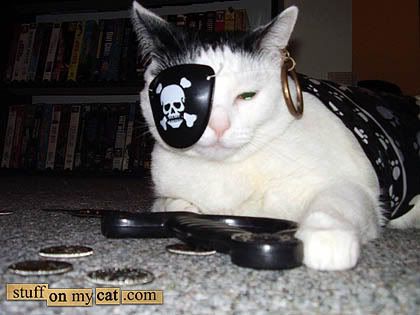
"ALL YOU NEED IS A STRONG STOMACH AND A MELON-BALLER!"
WARNING: THE FOLLOWING SURGICAL IMAGES ARE PROVIDED FOR THE PURPOSE OF EDUCATION AND ENTERTAINMENT. SOME MAY FIND THE IMAGES QUITE DISTURBING. SOME MAY FIND THE IMAGES QUITE FASCINATING.
First of all, I'd like to thank Ms. Vackar and her cat "Bella" for allowing me to share our experience with my blog fans. I hope Ms. Vackar has a really good sense of humor!
"Bella" was diagnosed with uveitis (inflammation of the globe of the eye) with a resultant glaucoma (increased pressure inside the eye). Glaucoma is really painful and the specialist described the pain as "having a bad migrane headache". Because "Bella" has some degree of kidney disease, the medication used to treat glaucoma shouldn't be used if there are other alternatives. The only other choice was enucleation (removal of the eye). Bella was already permanently blind in her bad eye and the eye was only serving as a source of pain. Ms. Vackar chose enucleation.
The following pictures were taken during the surgery.
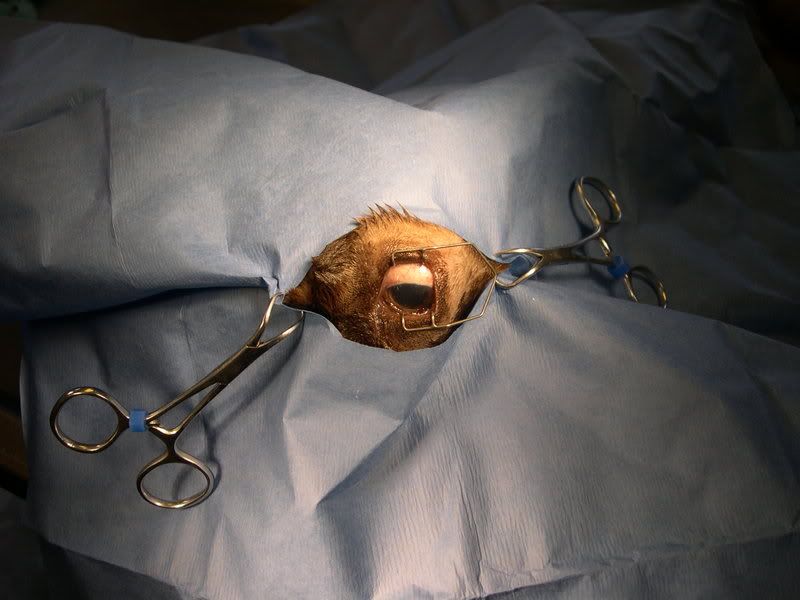
Fig. 1 - Preparation of the surgical site.
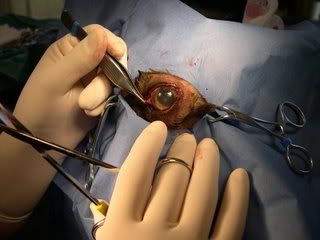
Fig. 2 - Removal of the conjunctiva and 3rd eyelid
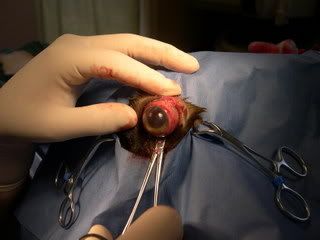
Fig. 3 - elevation of the globe from the socket
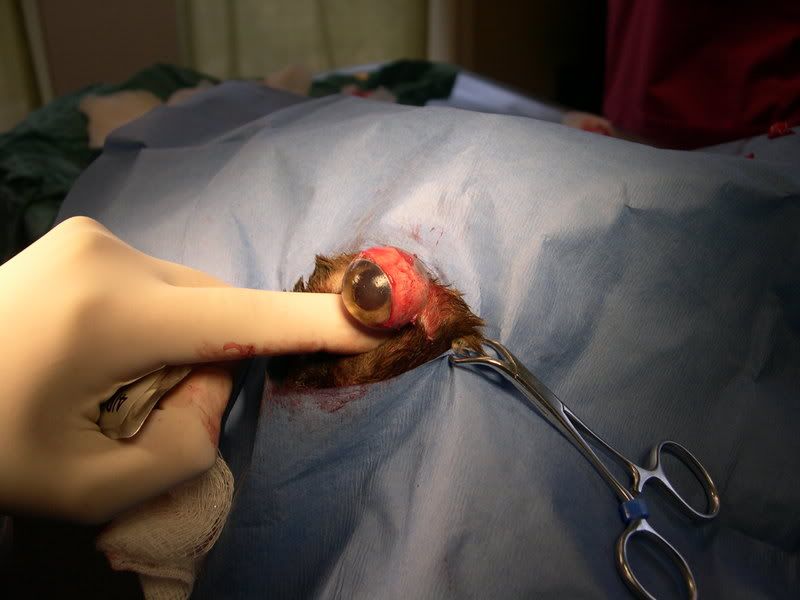
Fig.4 - Optic nerve under the globe being tied off
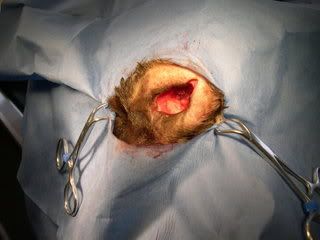
Fig. 5 - Empty eye socket after removal of the globe
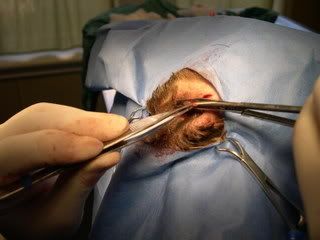
Fig. 6 - Trimming of the eyelids to create a smooth surface after healing
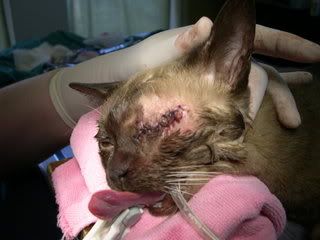
Fig. 7 - Surgical site after removal was complete!
It will take up to a week for the swelling to resolve. Sutures will be removed 10 days after the procedure and the hair will eventually grow over the site. I will post an update photo of "Bella" in a few weeks. :)
Dr. C
2/28/2007
Guess Who?

This is a matching game. Above is a list of employees at the clinic. Below that is a list of statements that represent one of our employees. You must guess who these statements describe. Answers are below. Have fun!
a. Krista
b. Hima
c. Lynn
d. Willie
e. Dr. Filip
f. Erin
g. Britni
h. Dr. Cornelius
i. Carma
j. Dr. Runte
1. Was a very mischeivous vet student
2. Loves reading anime books
3. O.S.H.A. Representative
4. Was voted "funniest vet student"
5. Attended an HSPCA singles event
6. Had blue hair in vet school
7. Always talks about The Sopranos
8. Is a Registered Veterinary Technician in the State of Texas
9. Wants to become a Registered Nurse (for humans)
10. Wrecked and totaled one of the other employee's cars
Answers: 1.j. 2.b. 3.i. 4.h. 5.c. 6.e. 7.d. 8.g. 9.f. 10.a.
I heart the cat clinic. :)
2/08/2007
Sex Reassignment Surgery

No, not me.
Today, I performed a sex-change on a cat named Ray Charles. Ray Charles came to me on Monday morning after a rough night at the EC. Ray was blocked and unable to urinate. He had been blocked for quite a long time, perhaps over 24 hrs. When I laid my eyes on him, I couldn't believe what I saw. He looked like a black and white prune with his head tucked into his chest because he was in so much pain. His potassium blood level was so elevated that he was at risk of developing a serious heart condition, his kidney levels were sky-high, and the pH of his blood was too acidic.
I hospitalized Ray Charles, put him on IV fluids, pain meds and antibiotics for three days. All of his blood levels were back to normal, and he tested negative for feline leukemia and feline AIDS. He was peeing normally, eating well and actually became a bit frisky, which can be very telling about a cat's overall health.
So today was the day I was to amputate Ray Charles' manhood. He was to become a she, and live the rest of his life at a significantly lower risk of urethral obstruction.
Hima (one of the nurses) took some pictures of the surgery, so I thought I'd share them with you!
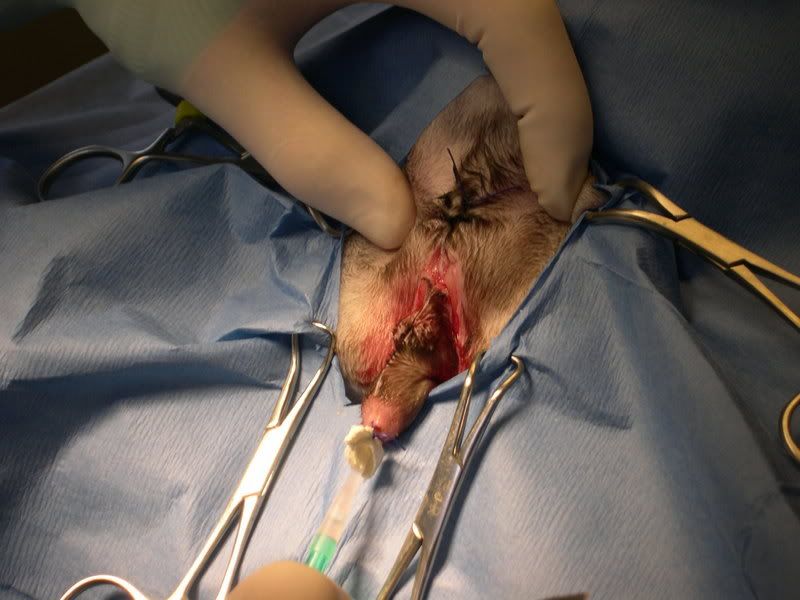
Fig. 1. This is showing the elliptical skin insicion around the prepuce and scrotum. A urinary catheter was placed prior to surgery. The anus is sutured shut and is visible above the incision under the base of the tail. The penis can be seen between the two metal towel clamps at the bottom of the picture. Kiss it goodbye!
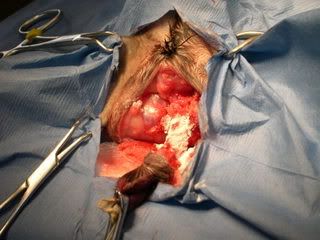
Fig. 2. This is the open surgery site. I had to remove alot of fatty tissue in order to find the underlying muscles that attached to the bony pelvis that needed to be cut off the bone in order to expose more of the penis during the surgery. The white powder is a product called Hemablock. It helps to clot blood and stop bleeding. There are many tiny blood vessles in fatty tissue, so it tends to bleed just a bit. No problem!
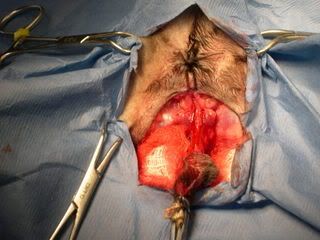
Fig. 3. The same view after the Hemablock stopped the small leaky vessel.

Fig. 4. SNIP-SNIP! :)
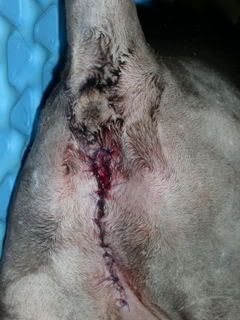
Fig. 5. The closed incision. Right under the anus is the new hole where Ray Charles will pee from. The penis is removed because this is where most cats are blocked.
As of tonight, Ray Charles looks great. He's awake and pain-free, peeing a normal amount of urine at normal intervals. He's eating and drinking and feeling WHOLE LOT BETTER!
Subscribe to Posts [Atom]
